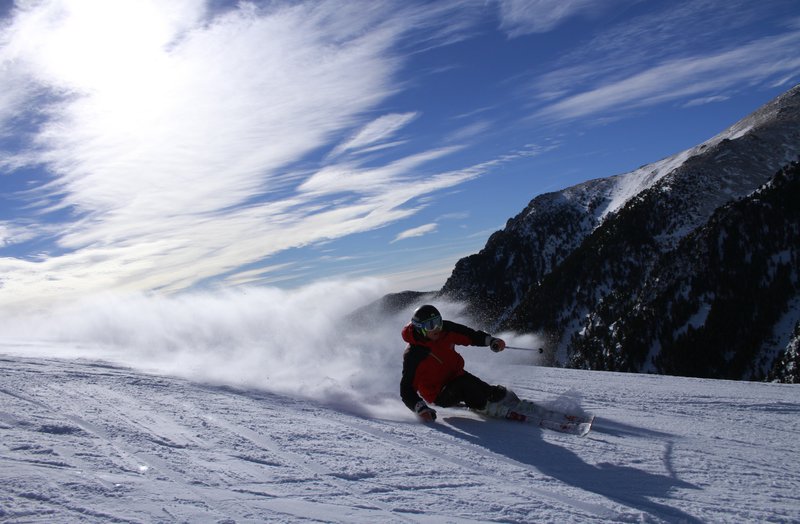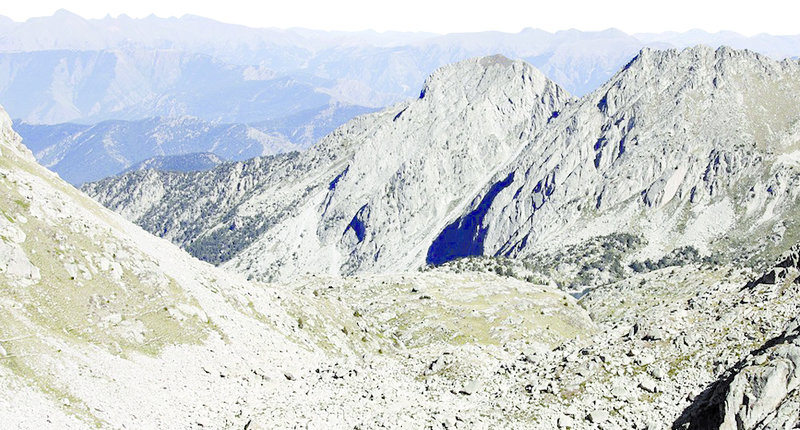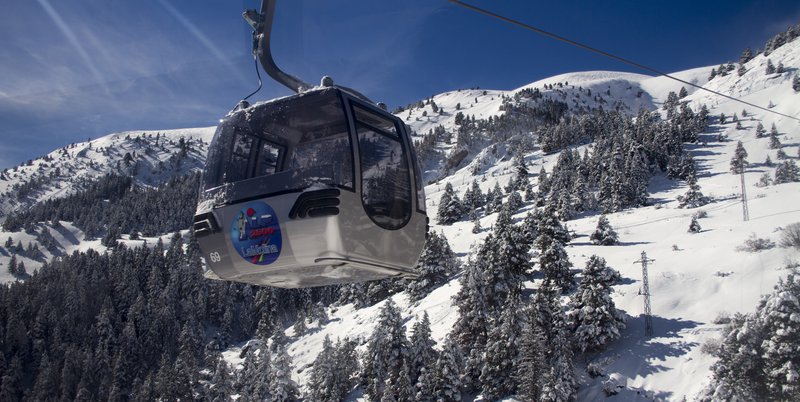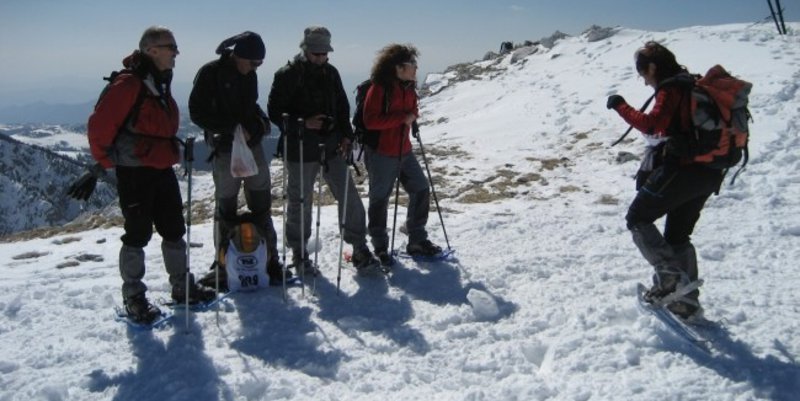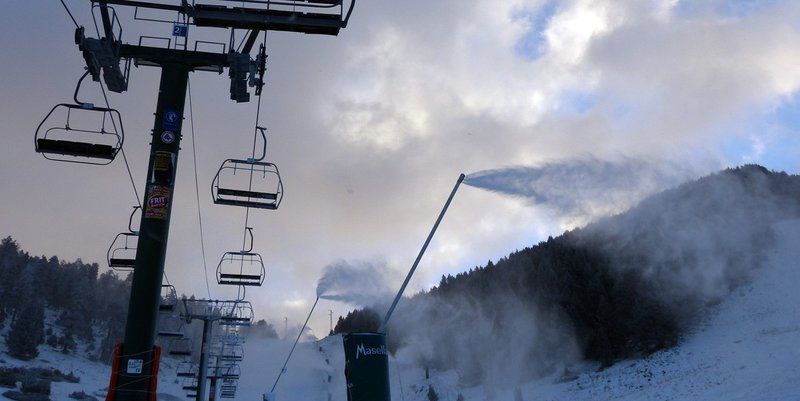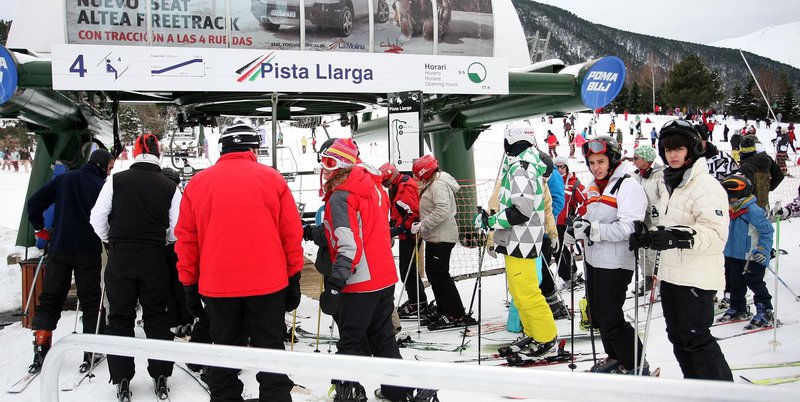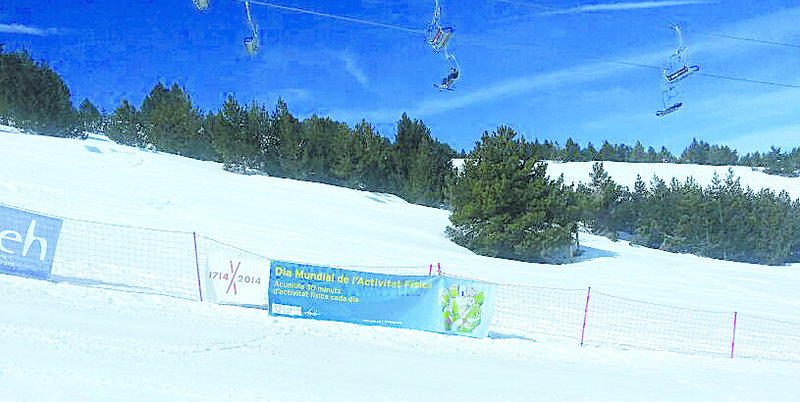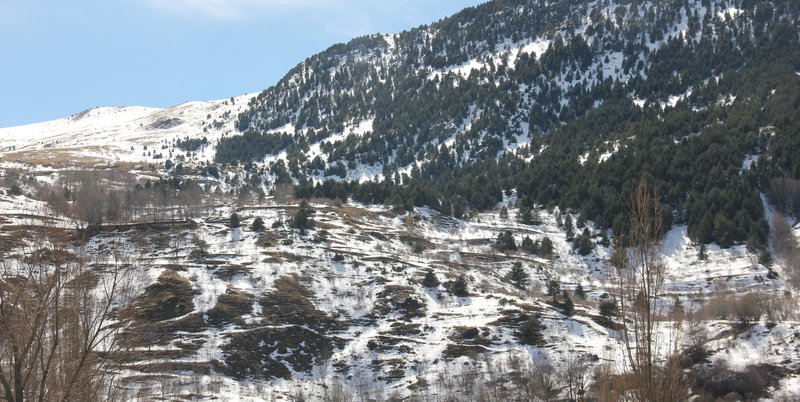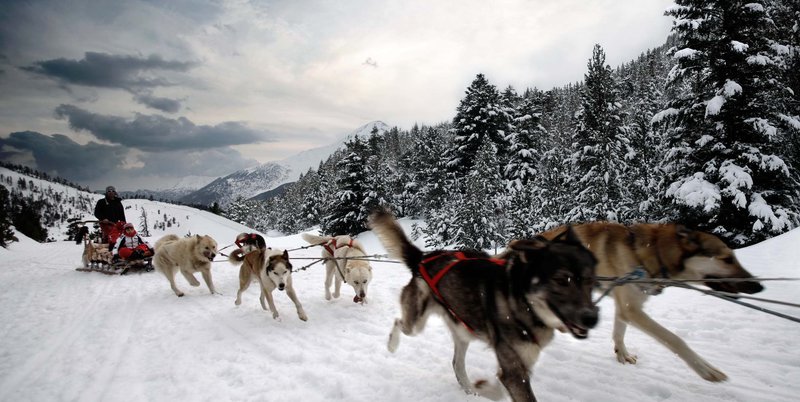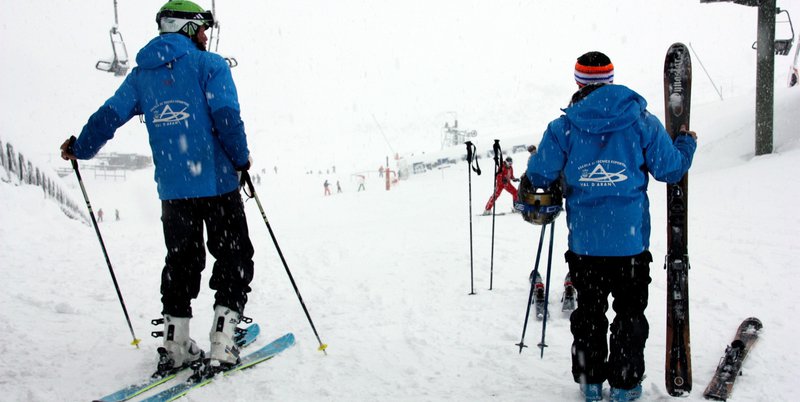All downhill for Pyrenees snow resorts?
Climate change, ageing skiers and economic crisis pose major challenges for future of winter sports sector
If there were any doubts about the ability of the Pyrenees to still attract skiers, a quick look at the figures is enough to restore some confidence. For example, over Christmas, Lleida's ski resorts alone attracted more than 40,000 people, some 30,000 of whom visited Vaquèira-Beret. Skiing and other winter activities are still big business in the Països Catalans. Every year, 350 million euros are generated for the Pyrenees economy, as well as 11,000 jobs in an area inhabited by only 80,000 people.
“In winter, there is no economic alternative to skiing,” says Albert Alins, the Generalitat's delegate of the Alt Pirineu and Aran. “The activity of the resorts is vital, because investment is fed back into the economies of a number of sectors.”
In terms of geography and altitude, the Pyrenees are not the Alps, and the quantity and quality of snow every year is irregular. Yet despite these potential drawbacks, the mountain area has learnt to make the most of its environment: “We have set up an economic system based on an irregular resource,” says professor of regional geography at the Universitat de Barcelona, Francesc López Palomeque. Yet, the ongoing economic crisis, changes in consumer trends and climate change all threaten the current model of winter sports in the Pyrenees.
A study by the Comunitat de Treball dels Pirineus estimates that between 2020 and 2050, there will be a 75% reduction in snow below altitudes of 1,800 metres, and reductions of between 30% and 57% below 2,400 metres. The majority of Catalan resorts are located at lower altitudes. In 1986, La Molina was the first resort to introduce snow cannons, and today the use of artificial snow has become widespread in all Catalan resorts that offer Nordic skiing. In fact, investment in facilities is a constant in resorts in an attempt to stay competitive and make up for the often insufficient weather conditions. Nor is there any end in sight to this continual round of spending as forecasts predict a general temperature rise of between two and four degrees by the end of the century. To get round the inevitable, there are number of small-scale initiatives to find solutions, such as experiments with special fibres that can substitute snow: “It may seem mad, but so did the first snow cannons,” says López Palomeque. Even so, covering thousands of square kilometres with fibre would require a huge investment, while the installation of cannons was done progressively. What's more, “in the US and the Alps they use cannons to guarantee snow for the whole season, while here they are used just to make sure that there is snow,” says López Palomeque, adding: “None of this would be sustainable without the government.”
Strategic business
Yet, the Catalan government considers winter sports a “strategic” business for the Pyrenees. A study by Esade and the Universitat Pompeu Fabra found that each euro spent on public transport tickets created an additional expense of six euros. However, the Generalitat is today the direct owner of seven of the nine Nordic ski resorts, in most cases after financial failure, and only two –Baqueira-Beret and La Masella– are still in private hands.
The most recent public acquisition was Boí-Taüll in December, after two years in which the resort has been unable to overcome its financial problems, despite generous loans. In all, the government spent 8.3 million euros on the deal: “The buy-out provides stability and is a guarantee of the future,” said Alins at the time.
Boí-Taüll's financial problems first emerged with the bursting of the housing bubble, and two years ago it was forced to go into administration and resort to loans from the Generalitat. Boí-Taüll is the second-largest tourist complex in the Pyrenees, with 46 kilometres of slopes and five hotels offering a thousand beds.
“Our position is that, as long as the economy of Alta Ribagorça does not become more diversified, the stability and maintenance of Boí-Taüll is essential for the county,” is how the secretary of Empresa i Competitivitat, Pere Torras, justifies the public buy-out, adding: “We are convinced that, with a process of investment and modernisation, it can be profitable. And we are going to put it on the market.”
The resort's former owners, Promocions Turístiques de la Vall, a company in the Madrid housing group Nozar, will continue to manage the complex for five years, according to the terms of the agreement: “They know the business and the resort. The problems are related to the bursting of the housing bubble and a lack of resources,” continues Torras. The Generalitat and the management are now developing a plan for the resort and looking into ways of raising more investment.
The rest of the Catalan ski resorts “are strong enough to overcome the current climatic and economic problems,” says the director general of the Generalitat's transport department, Ricard Font. The government and the sector are studying ways of working together to provide a response to the climatic effects on the business. Currently, the idea is to find a way of keeping the resorts open all year round: “The resorts have to be optimised to the maximum, so that the public investment guarantees profitability and a return,” says Font. This means adding activities to the resorts that do not require the presence of snow, such as trekking or canyoning.
Yet, even this solution is problematic, as it will provide competition against other companies that already provide tourist activities during the year: “As soon as you begin offering non-snow related activities, many companies might opt to move to Terra Alta or Montseny,” says López Palomeque, who insists that “the business will have changed in two decades' time. It will need to adapt and create unique products or compete on price,” he predicts.
One key to the diversification of the activities on offer will also require attracting different types of consumers. The average age of skiers is now 36, and in the past 10 years, the proportion of beginners taking up the sport has fallen from 30% to 19%, according to expert Laurent Vanat. Added to this are also the ongoing economic crisis, an increasingly sedentary youth and an ageing population. At the same time, the proportion of advanced skiers has actually risen by 5%, which leads Vanat to recommend the introduction of more skiing schools. López Palomeque agrees, saying: “The ageing of skiers is a worldwide trend. It is a question of fashion. It has to be reinvented,” he says.
Need to diversify 18 million investment
The Pyrenees economy was once diverse, including livestock farming, logging and mining. Today, the question is: without skiing, how would many areas make a living? “It has become a leisure park for Barcelona, Zaragoza and Madrid, but the white gold is coming to an end. Despite a a dwindling customer base, the territory still has value,” says López Palomeque. For this expert, the future economy of the Pyrenees depends on tourism and nature conservation. In 2013, the Alt Pirineu natural park attracted a record 243,000 visitors. “We are a long way from Barcelona and the climate punishes us. To maintain the current population, some type of new industry is required,” says local MP Agustí López. “It's true that trekking is on the rise and we have recovered and signposted paths. Yet, a greater effort is needed in transforming what we offer to complement to provide comprehensive tourism made up of culture, gastronomy and nature activities.”
In November, Catalonia's ski resorts were ready for the new season. In the summer, 18 million euros were invested in new facilities and services. Baqueira-Beret made the largest investment, with 11 million euros spent on three new ski lifts and an extra 21 kilometres of slopes. Meanwhile, Port del Comte has a new 200-place car park, and La Masella can now guarantee snow on 50 of its 74 kilometres of slopes thanks to 50 new snow canons. At the same time, the Tot Nòrdic resorts installed weather stations to provide up-to-date information online. In Andorra, Grandvalira expanded its facilities with a 9.2 million investment. Also this season, the Servei Meteorològic de Catalunya has a information website, while the Agència Catalana de Turisme is working to have ski resort officially certified with the Destinació de Turisme Familiar designation.
Catalan ski resorts
There are almost a score of ski resorts offering different forms of the sport in Catalonia. While many resorts in Andorra, Catalunya Nord, Occitània and even Aragon are also popular with people here, there are still plenty of, usually, smaller places available: Aransa, Boí Taüll, Gran Pallars (Espot Esquí, Port Ainé), Guils Fontanera, Lles, Masella, Molina, Port del Comte, Tavascan, Sant Joan de l'Erm, Tuixent - la Vansa, Vaquèira-Beret, Vall de Núria, Vallter 2000, Virós-Vallferrera, Llessui, Tuca, Forquets and Coll de Jou.

